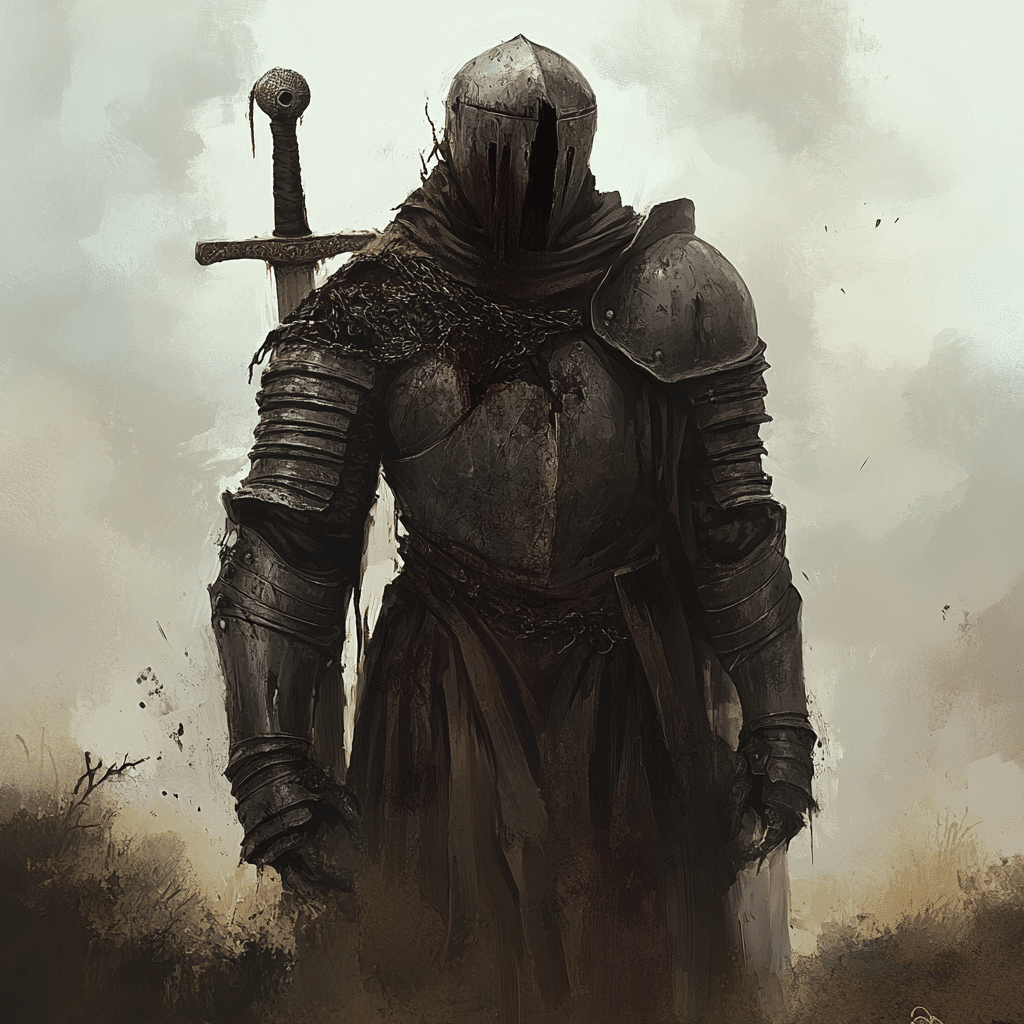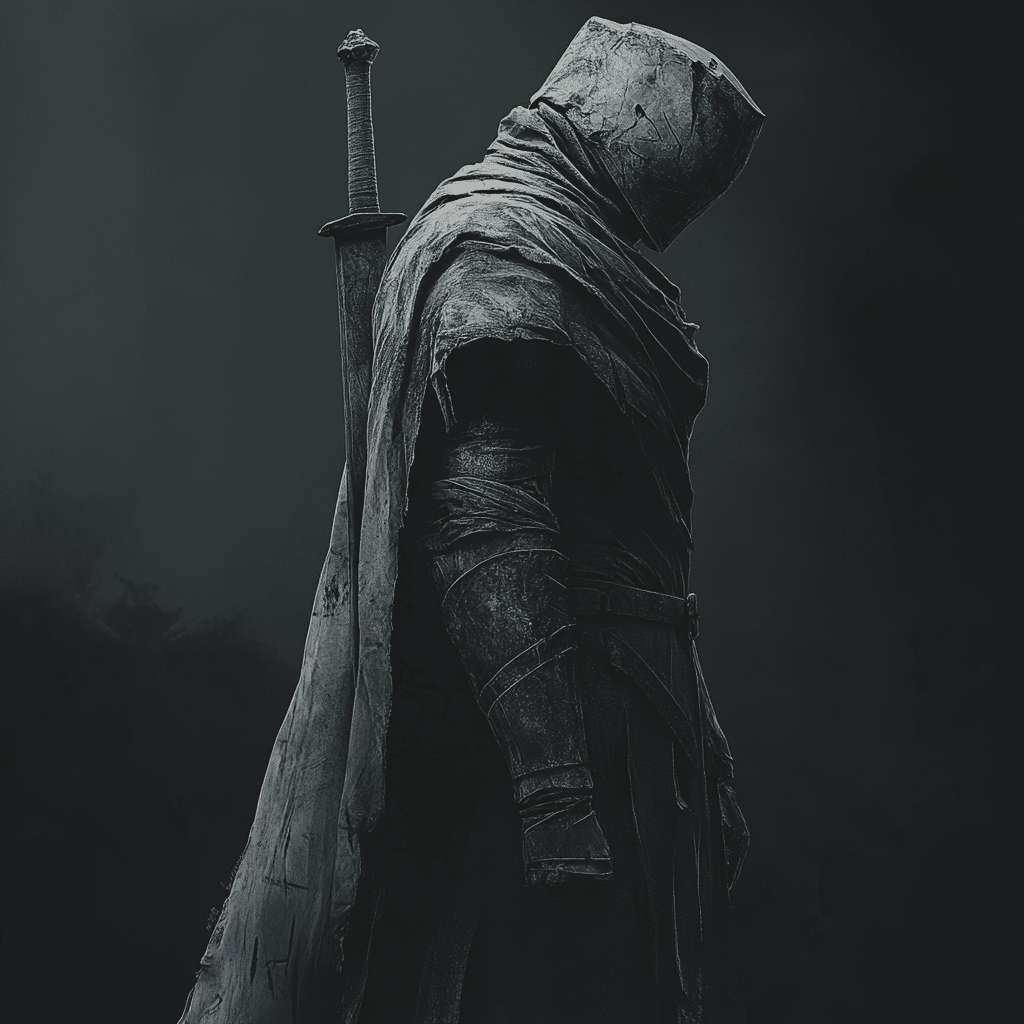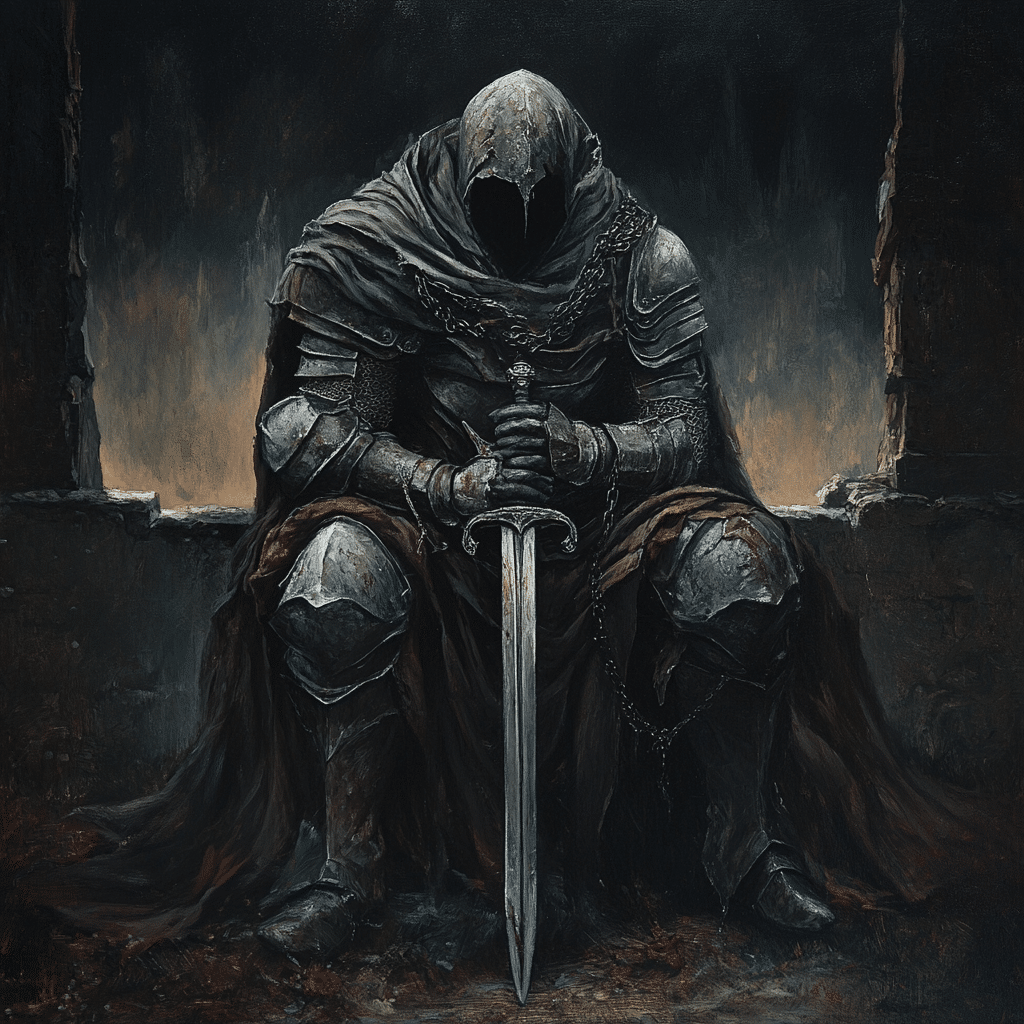When we dive into the realm of folklore, the headless knight stands as a menacing figure, weaving a tapestry of horror and intrigue. Known by various names and stories, this ghostly embodiment represents sinful deeds and the consequences that linger beyond death. As legends morph through the ages, the haunting imagery of the headless knight captivates audiences, feeding our anxieties while inviting contemplation of our own morality. Lightning crashes in the background, echoing the trespasses of the past, and moaning sounds resonate from the darkness, drawing us nearer to this chilling tale.
Unraveling the Legend of the Headless Knight: A Tale of Sinful Deeds and Mangled Eternity
At the core of the headless knight’s legend lies a story steeped in darkness and transgression. In medieval folklore, these figures often met untimely ends due to cursed lives filled with wrongful actions. The headless knight roams the earth, a lost soul burdened by a version of eternity shaped by regret and vengeance. From taverns to campfires, stories built around this specter evoke sympathy mixed with terror—a reminder that our actions can lead to consequences as chilling as a visit from this ghostly knight.
Across cultures, the tales surrounding the headless knight are beautifully jumbled, creating a rich tapestry of diverse interpretations. Each culture adds its unique spin, igniting imaginations while also warning us of the darker path of humanity. The impact of these stories goes beyond folklore, often resulting in cinematic adaptation, captivating viewers and ensnaring film enthusiasts who thirst for thrilling narratives.

Five Haunting Variations of the Headless Knight Across Cultures
1. The Headless Horseman (American Folklore)
The epitome of the headless knight is The Headless Horseman. Washington Irving’s “The Legend of Sleepy Hollow” has immortalized this phantom, forever tied to the eerie New York countryside. Picture this: a storm brews, lightning crashes, and our character—chasing after the living, with a ghastly roar—leaves behind chilling tales that continue to frighten. The narrative is a cult classic, reminding us of the high-stakes connection between choice and consequence.
2. The Dullahan (Irish Mythology)
Venturing over to Ireland, we meet the bone-chilling Dullahan. He’s a headless horseman to fear; carrying his own head tucked under one arm, he whips his steed into a frenzied gallop. Known to transport souls to the afterlife, his appearance usually foretells impending doom. The dread is palpable when you hear the tale, as the Dullahan’s presence manifests a cautionary element regarding a life led astray.
3. La Llorona (Latin American Legend)
Next in our lineup is La Llorona, whose tale has crossed many a generation. While usually depicted as a sorrowful woman, some variations see her in a grotesque light, her headless visage bemoaning lost children as she wanders the shores. The cacophony of raging waves often plays a symphony of anguish, emphasizing the consequences of her actions and filling listeners with unease—a perfect conversation starter around pinches of spooky storytelling.
4. The White Lady (European Folklore)
The enchantingly tragic figure of the White Lady emerges across various European cultures. Often depicted as a phantom haunting the ruins of formerly grand castles, she embodies deep-seated loss. In some stories, the motif of her missing head evokes poignant imagery as she navigates her sorrow and regret. As tensions rise, parallels can be drawn to the sinful deeds that might lead one to eternal mourning.
5. The Black Knight (Various Legends)
Our final variant is the formidable Black Knight, appearing throughout Arthurian legends and beyond. He embodies a complex character, often losing his head due to treachery in epic battles. Yet, his tale isn’t just one of heart-pounding action; it often delves into regret and sorrow, enriching his character. Just like in “Con Air,” where every character has layers of complexity, the Black Knight wakes viewers up to the reality that no one is simply their battle scars.
The Psychological Impact of Headless Knight Legends: Cautionary Tales Wrapped in Fear
The spine-chilling tales of headless knights delve into the deepest corners of our psyche. The symbolism of losing one’s head equates to a loss of identity and control, igniting fear with unmistakable intensity. As each legend unfolds, we begin to recognize the underlying message: our sinful deeds may trap us in our darkest truths, leaving us longing for redemption while grappling with the specters of our past.
These cautionary tales resonate across generations, emphasizing that human actions reverberate longer and deeper than intended. It serves as a stark warning—the consequences of our choices can come back to haunt us. Just as horror films continually play on our anxieties, the headless knight mythos doesn’t simply entertain but provokes a powerful contemplation of who we are and what we stand to lose.

Cinematic Representations: How the Headless Knight Captivates the Silver Screen
The allure of the headless knight has found a perfect stage in cinema, giving life to these timeless tales. Tim Burton’s “Sleepy Hollow” sets an atmospheric tone that catapults viewers into a world of fright, where lightning crashes dramatically capture the viewer’s imagination. The film artfully marries tension with aesthetics, highlighting the headless knight’s role as a powerful storyteller and a vessel for deeper themes of vengeance and loss.
The diverse adaptations of “The Headless Horseman” reveal filmmakers’ knack for playing with horror motifs. Each depiction communicates the fears of audiences while exploring weighty themes, often reflected through haunting imagery reminiscent of classic horror films. Scenes are crafted with intent, enabling engaging dialogues among cinephiles seeking connections between ancient lore and the modern cinematic experience.
Uncovering the Truth: Folklore’s Role in Modern Culture
The imaginative landscape of the headless knight stands tall, reflecting a persistent intrigue with folklore in modern culture. These legends ebb and flow, finding new forms in our literature, films, and even during Halloween festivities, creating a bridge that connects us with our past. Rolechat, a platform showcasing media discussions, fuels engagement around such tales, reaffirming their place within contemporary narratives.
Meanings twist and turn like a well-crafted film plot, making the headless knight a versatile metaphor for humanity’s shared fears and consequences. Countless adaptations in movies and shows reflect the intersection between legends and cultural identity, allowing audiences to dive into deeply rooted themes. The raging waves of these stories reveal how intertwining histories can breathe new life into legends, making them relevant for emerging generations who hunger for authentic storytelling.
As we navigate through the chilling tale of the headless knight, we’re reminded that beyond the scare, there’s an invitation to introspect. As haunting as it is captivating, folklore ignites a spark for reflection, offering lessons hidden beneath the flickering lights of cinematic fears. So, next time you catch your heart racing in a horror flick, remember—the stories we share are as eternal as the deeds we perform. They echo in the night, waiting for someone to uncover their profound resonance in today’s world.
The Headless Knight: Legends and Lore
Tales from the Shadows
The chilling legend of the headless knight has captured imaginations for centuries, with stories emerging from various cultures. These eerie tales often feature a specter riding through fog-laden forests or shadowy battlefields, searching for its lost head. Interestingly, the concept of headless beings isn’t just found in folklore; it has trickled into modern culture too, influencing films and books alike. Speaking of cultural touchstones, do you remember the memorable Con Air cast? A testament to the appeal of gripping narratives, that film drew people in just as headless knight legends do.
The Headless Knight in Popular Culture
Those eerie tales have seeped into pop culture, inspiring films, literature, and even anime. For instance, the legendary headless knight resonates within numerous horror-themed anime series, adding a spine-chilling twist to many plots. Just as some might indulge in exploring the controversial themes of different genres, like anime girl naked narratives, others find fascination in the depth of these ghostly legends.
The Symbolism Behind the Legend
The headless knight often symbolizes loss and unresolved tensions, a character endlessly searching but never finding closure. This idea resonates powerfully with audiences, echoing in our own lives and stories. It reminds folks that every hero has a battle to fight, much like the metaphorical journey many embark upon, such as the choices related to Wegovy vs Mounjaro and what they mean personally. Moreover, the appeal of these stories transcends time, much like the ongoing popularity of shows like Sunshine streaming, which weaves tales of hope amidst adversity. Ultimately, the headless knight is more than just a ghost; it’s a representation of the darker aspects of humanity and our quest for balance, resonating far beyond ancient lore.





